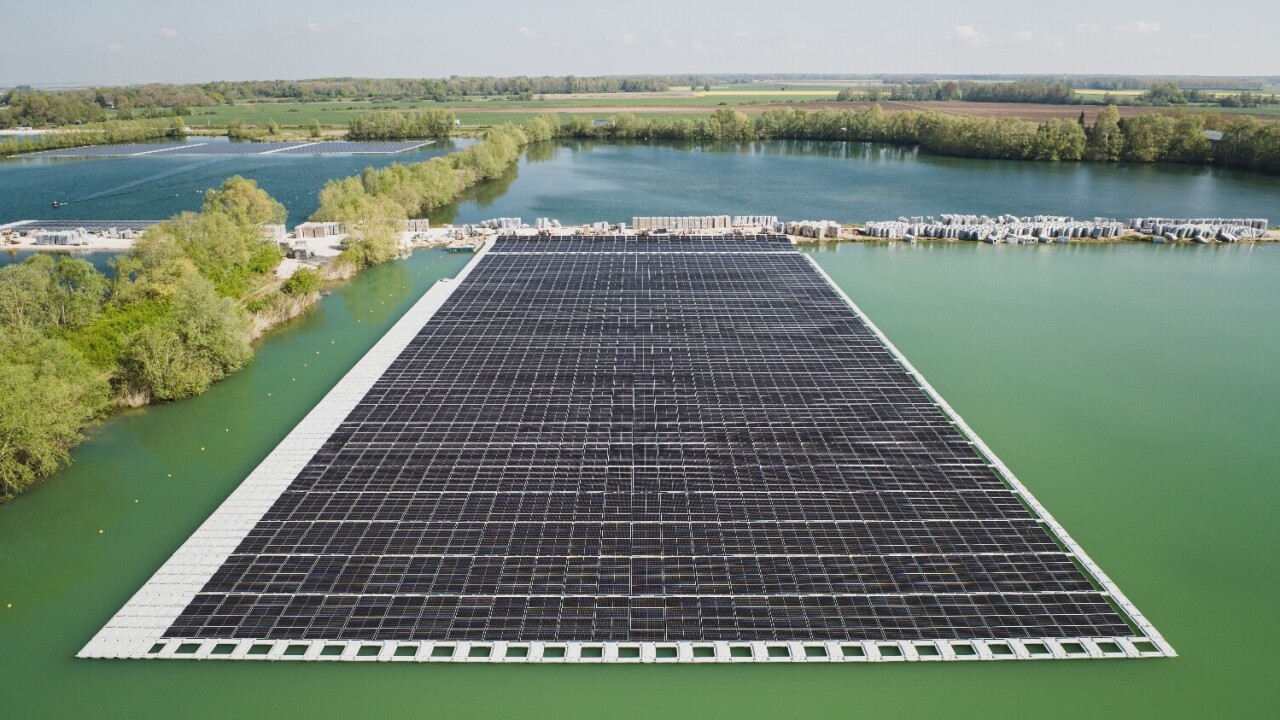Berlin-based renewable energy firm Q Energy has secured €50mn in debt finance to complete work on Europe's largest floating solar farm, set to power up next year.
The plant is already under construction at the site of a former quarry in the Haute-Marne region of France. Once finished, the farm will comprise 134,649 floating solar panels covering an area equivalent to 180 football pitches. The huge 73MW array will cater to the electricity needs of around 37,000 people, Q Energy estimates.
Floating solar farms — or “floatovoltaics” — work much like their land-based cousins, but on water. Each one comprises an island of panels, mounted atop a buoyant platform, and anchored to the bottom of the water body by cables.
Floating solar is getting its moment in the sun
While they only make up a small percentage of total solar energy generation, global floatovoltaics capacity has skyrocketed in recent years, from just 68MW in 2015 to over 3GW in 2022.
Floatovoltaics offer some distinct advantages over land-based PV. The cooling effect of the water can help cool the panels, boosting efficiency. By covering the surface of a reservoir or lake, floating arrays also reduce evaporation, saving precious fresh water. But the biggest selling point is that floating solar panels don't use land.
By some estimates, countries will have to give over up to 5% of all their land to solar panels in order to fully decarbonise by 2050 — potentially further fuelling existing tensions with farmers, conservationists, and other land users.
Floating solar arrays, deployed on man-made reservoirs or lakes that aren't used for recreation, could help alleviate the problem. Especially for land-scarce countries, it simply makes sense. It's the same logic that pushed wind farms offshore.
The bulk of growth in floating solar has been in the population-dense regions of East Asia. The world's biggest plant, the Dezhou Dingzhuang solar array in China, has a peak output of 320MW. Meanwhile, South Korea is currently building a floatovoltaics park that will eclipse all others with a capacity of 2GW — enough to power around 1 million homes.
Netherlands leads Europe in floating solar
In Europe, the Netherlands — 20% of which is covered by water — is leading by a long shot. Dutch renewable energy company GorenLeven has installed 500,000 panels on lakes throughout the tiny country. The Netherlands is home to Europe's current largest floating solar park, a 27.4 MW operation constructed by German firm BayWa.
The land of bicycles, windmills and cheese is also set to build floating solar plants in the ocean. Dutch startup Solar Duck recently installed its first pilot offshore solar platform in the North Sea. However, waves and saltwater present a host of engineering challenges, which is why the bulk of floating solar projects are based on inland reservoirs. Even here, the potential is huge.
A paper published in in 2022 estimated that covering 10% of the world's hydropower reservoirs with floating solar panels could produce 4,000 GW of power-generating capacity. That's equivalent to all the fossil-fuel plants in operation worldwide.
The floating solar market has been valued at $4bn in 2022 and is expected to hit $54bn by 2032. There are also several projects and many others underway in Portugal, Spain, France, Germany, and Greece, among others. With such rapid growth, Q Energy's floating solar farm's title of Europe's largest probably won't stand for all that long.
